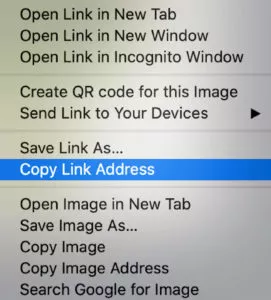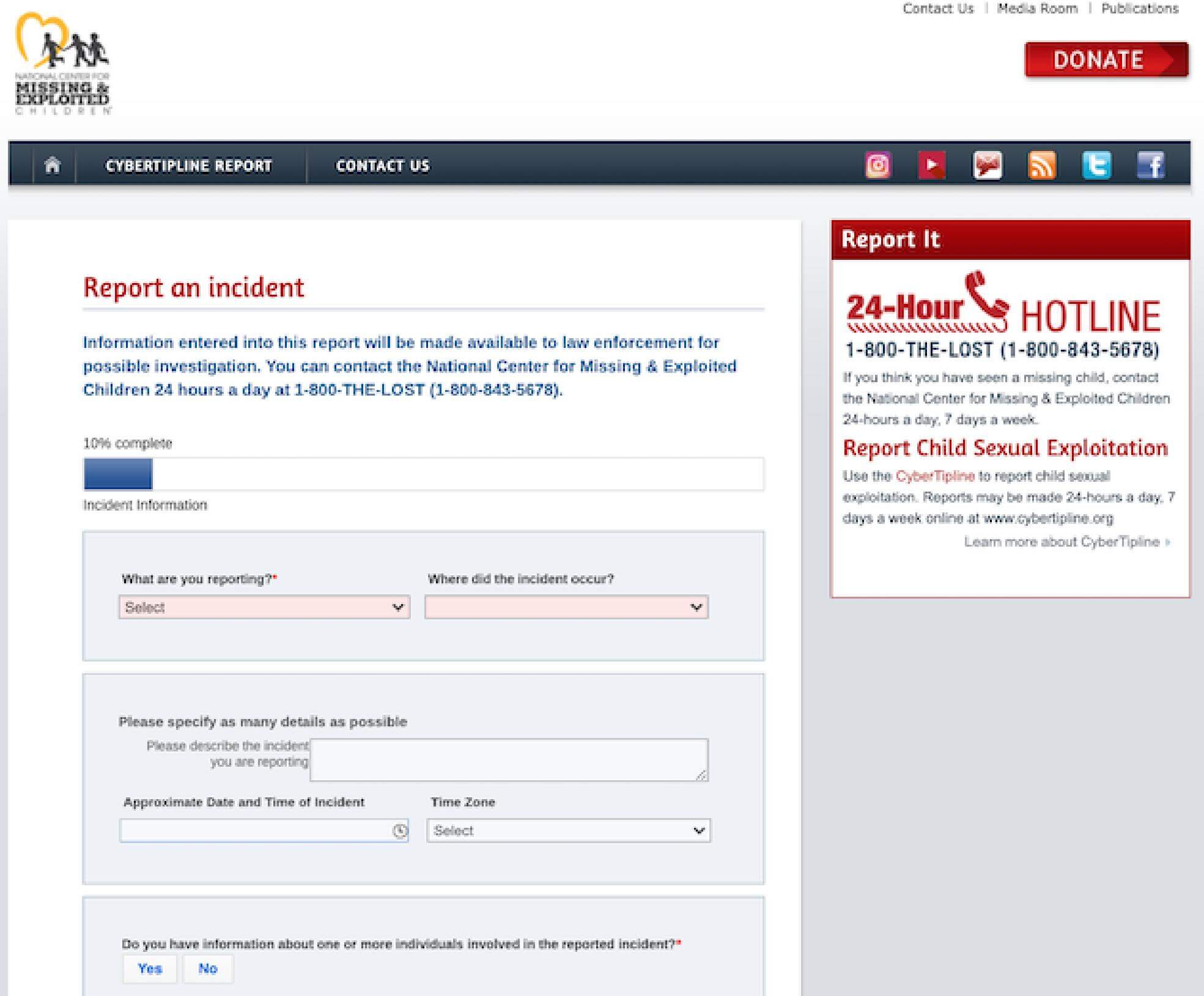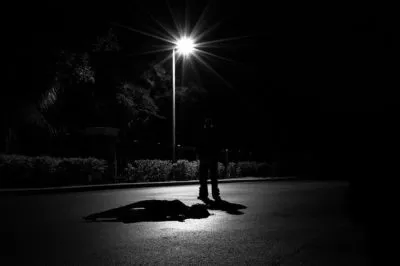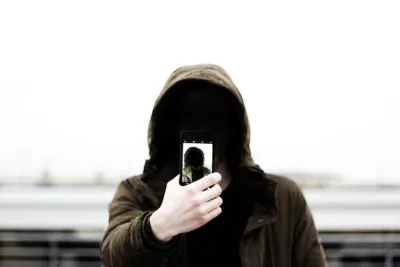
How to Report & Remove Child Pornography From the Internet
This page has been peer-reviewed, fact-checked, and edited by qualified attorneys to ensure substantive accuracy and coverage.
If you discover underage nude images or videos of yourself on the Internet, act quickly to remove and report child pornography by:
- Contacting local law enforcement,
- Reporting the explicit content to the National Center for Missing and Exploited Children (NCMEC). Call 1-800-THE-LOST (1-800-843-5678),
- Contacting the website(s) where it is posted to request its removal, and
- Consulting with an experienced content removal attorney.
We at Minc Law have extensive experience reporting and removing child pornography from the Internet. We act swiftly to put an end to its dissemination and work with local law enforcement to identify and hold offenders accountable.
Below, we explain the definition of underage nudity in greater detail and why it is critical to remove it immediately. We will also walk you through the process of reporting and removing underage nude images and child pornography from the Internet—and preparing to speak with an attorney who can help.
Types of Websites That Post Child Pornography
Child pornography is any visual depiction of sexually explicit conduct involving a minor. Federal law prohibits the production, distribution, or possession of any child pornography.
Whether you took the photo of yourself, or someone else took it for you, this is still child pornography. A minor cannot consent to the taking or publication of child pornography. Child pornography is always sexual abuse content.
Underage nudity and intimate media can be posted anywhere. However, it is most often posted on “leaked” forum websites by third-party users. These websites purport to only allow users to upload content of people who are over the age of 18—but this is often not the case.
Many websites have zero-tolerance policies for hosting child pornography and will immediately remove unlawful content upon receiving correspondence from an attorney. Unfortunately, not all websites are this understanding. This makes removing child pornography extremely difficult.
Websites may require proof that the explicit content is child pornography. This can be very difficult to prove, especially if the images are old and the person depicted is no longer a minor.
With a team of experienced attorneys, we will fight for the closure you deserve. Take back control today.Don't suffer in silence.
Where Do Websites Source Images of Underage Nudity?
Images of underage nudity are typically sourced by users and can be found throughout almost every Internet platform, including:
- Forums,
- Anonymous discussion threads,
- Dark web sites,
- File-sharing sites,
- Photo-sharing websites,
- Video gaming sites,
- Social media platforms.
Even though most social media platforms like Facebook and Instagram use artificial intelligence to remove images of child nudity as quickly as possible, offenders still attempt to publish and share child pornography on these mainstream sites. And private messaging apps like Facebook Messenger and Kik Messenger are also used to distribute abusive content with less policing.
In the course of our practice, we have found that some websites that publish underage images appear to be user-submitted websites for images that are pornographic, as well as not sexually explicit content. They will publicly publish legally taken and shared photos and videos of women on their site. Or non-sexual imagery of underage girls.
However, in some cases, these sites will require users to pay money (via bitcoin) for access to more explicit and, in some cases, illegal underage content. Although you would not necessarily know this from the available images and content that are available publicly.
Websites and forums used to publish and exchange child pornography are generally located overseas on highly unregulated or peer-to-peer (P2P) networks and servers. P2P networks are groups of thousands of computers connected by software for the purpose of file-sharing. These networks are usually not regulated by social media companies or more mainstream file-sharing tools (such as iCloud or Dropbox).
Because P2P networks do not have moderators or central servers, it can be very difficult to oversee or trace the content shared within them. Especially if they are hosted on the dark web.
Additionally, websites hosting sexual abuse content can use multiple strategies to evade the law. These strategies include:
- Using different websites to host links to the content,
- Accepting anonymous form of payment, like bitcoin,
- Operating in foreign countries outside the reach of U.S. law, and
- Operating under fake aliases and email addresses making it difficult to find the proper contact for removal (or criminal prosecution).
As a result, you will likely need a multi-faceted approach to remove and report child pornography on the Internet.
Minc Law Fact: In recent years, the Child Rescue Coalition created the Child Protection System. This surveillance software tracks users of P2P networks who enter search terms related to child pornography. The information gathered by the Child Protection System has helped law enforcement agencies track down and prosecute hundreds of offenders.
Importance of Reporting & Removing Underage Nudity on the Internet
Many teenagers do not realize that while they are underage, sexting is considered child pornography. The teenager taking the photo or video could be charged with disseminating child pornography. And the person receiving the explicit media could be charged with the possession of child pornography (even if they did not request it).
There can be criminal consequences for anyone sending or receiving nude images of minors, regardless of intent. The bottom line? Sexting is child pornography if you are a teenager, full stop.
There is tremendous potential for reputational harm and damage for being associated with child porn in any capacity. You can be labeled a sex offender or child predator for the rest of your life.
As an underage person, there are more risks to participating in sexting besides legal ramifications. Sending nude images to strangers is always a bad idea because it comes with a high risk for blackmail and sextortion. And even sending the media to someone you consider a friend can be dangerous; once that media leaves your hands, you have no control over where it goes.
Minc Law Online Safety Tip: Although the advent of mobile phones and social media has made it feel mainstream, sexting is always a bad idea. It may start innocently enough, but the dangers of sexting are high and put you at risk of that media being published for the world to see and use. If that explicit content falls into the hands of malicious actors, you could even be exposed to bullying or sexual predators.
What Laws Are in Place to Protect Children From Exploitive Images?
The production, distribution, reception, and possession of child pornography are prohibited under federal law. The two U.S. statutes that address and criminalize child pornography (and certain related activities) are 18 U.S.C. § 2251 and 18 U.S.C. § 2252. Section 2251 also makes it illegal to persuade a minor to produce or send sexual content of themselves.
A violation of federal child pornography law can lead to severe penalties, including fines and up to 30 years in prison. And if the offense accompanies a situation of violence or sexual abuse (or the offender has prior child sexual abuse convictions), the penalty may include life imprisonment.
Note that an offender can be prosecuted under state child pornography laws instead of (or alongside) federal laws.
In several states, legislation exists to draw a line between sexting by minors and malicious child pornography. If a minor is simply engaging in sexting, they may face less serious charges than an adult who has demonstrated a pattern of abusive or predatory behavior.
How Does Reporting Underage Nudity on the Internet Keep Children Safe?
Reporting child pornography helps bring it to the attention of law enforcement. In that way, bad actors who are distributing and publishing the explicit material can be identified. This potentially stops further distribution of nude images.
In other cases, there are more serious offenses and crimes being committed. Including rape or sex slavery. By reporting incidences of illegal nude images law enforcement can potentially track and identify the source and circumstances. In these types of cases, identifying perpetrators can lead to children being taken out directly out of harm’s way.
How to Report & Remove Child Pornography
If you discover underage nudity or child pornography online, report that illegal content as soon as possible. Follow the steps outlined below to ensure the proper channels are alerted of the situation:
- Contact law enforcement;
- Notify the National Center for Missing and Exploited Children (NCMEC);
- Contact the offending website directly;
- Send Google a notice of revenge porn to remove the URL from its search results;
- Contact an experienced content removal attorney.
1. Contact Law Enforcement
The first action you should take if you find sexual abuse and inappropriate content picturing a minor is to contact your local police. You may be able to choose whether you want to anonymously report an instance of underage nudity, or identify yourself in the report.
Law enforcement may be able to help track down and remove inappropriate and sexual content from the Internet. For example, a police officer or task force can often make contact with a host or website where the underage nude media in question is posted and identify the perpetrator(s) behind it.
2. Reach Out to the National Center for Missing & Exploited Children (NCMEC)
Another option is to file a formal report with the National Center for Missing and Exploited Children (NCMEC). NCMEC has a CyberTipline to report sexually exploitive images and videos to law enforcement.
To report underage nudity and sexually exploitive im21ages on the NCMEC website and CyberTipLine, take the following steps:
Right-click the image(s) or video(s) in question and copy the image or video’s “location” or “address.”

Visit the NCMEC website and CyberTipLine website.

Describe the incident you are reporting (including the approximate date of the incident), then submit the report.
NCMEC also provides protection and rehabilitation services for underage sexual exploitation victims and assistance to victims and families when they need help with a missing, exploited, or recovered person under 18 years old. This includes assisting with underage sexual abuse material and violence.
3. Contact the Website Directly
In order to remove explicit content from the Internet as soon as possible, sometimes this requires reaching out to the website. Unfortunately, it can often be very difficult to find contact information for a website.
It is worth noting, also, that every situation is different—and sometimes it is best to let a third party like an attorney or law enforcement contact the website for you. It is possible that in extreme circumstances, contacting a website could make the situation worse.
Not surprisingly, many websites that display this type of content run shady operations. Because websites often make money by selling nude images and explicit content, they may not want to remove it for fear of losing an income stream. They may often choose to ignore victims, hoping that the victim will not be able to do anything about the situation. They will also purposely try to hide their identities and contact information to avoid communicating with the public, lawyers, and law enforcement.
When an attorney reaches out to a website, they will send the website notice of underage nudity and request full removal of the content. Besides requesting full removal, an attorney will work with the website to see if they can offer any assurances that the content will not be posted back on the website in the future. This includes requesting the enactment of gating tools and filters.
Some websites are willing to enact filters that automatically replace a minor’s name with a word like “blocked” to ensure that their name is not being reposted constantly. This method is particularly effective with pornography forum websites.
4. Send Google a Notice of Revenge Porn to Remove the URL From Search Results
While Google does not specifically have a portal for submitting notices of underage nudity, Google does have a revenge porn portal.
Google’s revenge porn portal provides great temporary relief by preventing the content from appearing in a Google search. It does not completely remove the content from the original website. Even so, this can be an extremely valuable tool to decrease Internet traffic to the content, as most people use Google when searching for content on the Internet.
Google can be extremely particular about these requests, so a removal request may have to be sent several times before being accepted. And unfortunately, a determined website administrator or poster can return the content to Google search results after it has been removed by reposting the content or changing the file name or URL that content is posted on by a single character.
At Minc Law, we have seen some instances where websites have their content re-indexed in Google by constantly changing the page URLs. For example, a website may change the URL “Jen-smith-page-1” to “Jen-smith-page-2” to keep the content online.
However, this behavior is typically the exception and not normal for most sites. Furthermore, websites that do engage in this behavior run the risk of eventually having their entire website de-indexed from search results by becoming repeat offenders of Google’s content guidelines.
5. Contact an Internet Attorney to Help Secure Its Removal
You can also reach out to a content removal attorney, who can help you evaluate your options and help you select a strategy to try to remove the content while also protecting your identity. A content removal attorney will likely use one or several of the above approaches, along with filing a civil lawsuit.
Online content, including child pornography, can be removed from the Internet and search results in many cases with a court order obtained in a civil lawsuit. To obtain a court order, you must file a lawsuit against the poster or the website to compel them to remove the child pornography.
For example, an attorney may be able to file a lawsuit civilly pursuant to a federal criminal statute to:
- Remove child pornography from a website by obtaining a court order to remove content,
- Recover damages that you incur during the discovery and removal of content, and
- Hold the perpetrator accountable for their actions.
Although filing a lawsuit can be costly, this can be an extremely effective way to remove pornographic content from the Internet.
Video: What to Do If You Did Porn & Now Want it Removed

Finally, an experienced Internet content removal attorney can help you identify the person who is posting your images and secure a court order to ensure that the poster will not post the content again in the future. Importantly, unlike most civil cases, it is possible to keep the name of the victim/Plaintiff anonymous in cases like this to keep the matter confidential, which offers some reprieve to victims.
6. Other Methods to Report Child Pornography & Sexual Abuse Imagery on the Internet
Finally, you can also use one of the following methods to report to other national and international groups that regulate Internet content:
- You can report suspicious or abusive content to the Virtual Global Taskforce (VGT) by visiting their website and clicking “Report Abuse.”
- To report an incident that may involve child sex trafficking, call the National Human Trafficking Resource Center (NHTRC) at 1-888-3737-888, or use their online report form.
- To report suspected child abuse, you can contact the National Children’s Advocacy Center by calling the National Child Abuse Hotline: 1-800-4ACHILD (800-422-4453)
- You can make a report of child sexual abuse photos, videos, or other content online to the Internet Watch Foundation
- If you are in the United Kingdom, you can report suspicious activity to the Child Exploitation and Online Protection command (CEOP)
- If you are in Australia, you can report underage nudity to the Australian Federal Police using their online child sex exploitation form. You can also visit the ThinkUKnow website and click “Report Abuse.”
How Long Does It Take For Images of Underage Nudity to Be Removed From the Internet After They Are Reported?
How quickly a victim will see relief from reporting imagery really depends on:
- Where the content is posted,
- To whom the report is being made, and
- What sort of action is taken in response to the report.
When you make a report with the intent to remove content, most reputable websites and search engines will act to remove it within a few hours to a few days. Of course, other websites will not be as cooperative.
If it is difficult to find proper contact information to report the content (or the website in question is shadier in nature), the process can take much longer. You might need to make multiple requests to multiple parties in order to receive a response.
When you make a report to law enforcement or another organization, it can often take days, weeks, months, or even years to see a response and for the agency to take action.
This long wait time is especially true if criminal prosecution is being contemplated. Police and prosecutors will be very careful and deliberate in the steps they take to gather evidence and investigate, build a case, and charge a culprit with a crime.
Why It is Critical to Remove Child Pornography & Leaked Nude Images Immediately
Acting immediately to secure the removal of child pornography is extremely important because the longer content remains online, the more people will view it. Also, waiting to take action can mean losing valuable and time-sensitive IP data. Finally, the content can be “scraped” by other websites if you do not take immediate action.
The Longer Content is Online, the More People Will See It
If the content appears in your search results connected to your name, anyone who searches you can access it. As content solidifies itself in search results, it can garnish more attention and views.
This publicity can have damaging effects on your career and personal life.
Loss of Fresh & Valuable Data
If you do not know who is posting the underage photos of you and you want to find out so that you can attain damages and stop them from posting, you will need fresh IP addresses.
Websites and Internet service providers (ISPs) typically only keep IP addresses for a limited amount of time. Waiting too long to pursue these IP addresses will put you at an increased risk of losing the data needed to identify the person posting your content.
The Content Could Be Scraped & Republished By Other Websites
The longer content is posted online, the more likely it is to be “scraped” to more popular “leaked” porn websites and forums. The more websites where that content appears, the more expensive and time-consuming it is to remove the content.
Longer exposure also increases the content’s chances of being posted on a website that is not based in the United States. This is a huge barrier to removal, as foreign websites do not have to adhere to U.S. law.
While nearly 50% of all countries have their own child pornography laws, using the protections of these laws may require enlisting the assistance of an attorney who operates in that specific country.

How to Prepare to Talk to an Attorney to Remove Child Porn & Leaked Nude Images
In order to act as quickly as possible, your attorney will need information from the moment you hire them for your matter. When preparing to speak to an attorney about your sensitive child pornography matter, take steps to document the essential information, including:
- URLs and locations of the online content;
- Possible offenders or persons guilty of posting the content;
- Documentation of all messages with the poster (if any).
1. Document All URLs of the Content That You Can Find
Before you speak to an attorney about this distressing content, you should gather a list of the URL(s) connected to the content.
You can find content by searching your name, the title of the content, or conducting reverse image searches. Providing this list to an attorney will help them determine the best strategy for removal.
For example, you can conduct a reverse image search on Google by:
- Going to Google Images;
- Uploading a picture(s) from your camera roll;
- Dragging and dropping a picture into Google Images;
- Searching Google Images with a URL.
An attorney can help you conduct further searches to discover how much content is out there and how many websites contain the sensitive media.
2. Make a List of Who Posted the Content (Or Who You Think Posted It)
If you know who posted the content, an attorney may have additional options to help you in securing its removal. The person who posted the content might be able to remove the content or help pay for the content to be removed.
If you do not know who posted the content, you should make a list of people who could have possibly posted it. This includes anyone to whom you may have sent the images, or who may have access to the content.
There is a possibility that the content could have been hacked from a phone gallery or personal Snapchat. This is why it is extremely important not to keep intimate images of yourself saved to private galleries or on social media apps.
3. Preserve All Communications & Threatening Messages
If you have received any threatening messages related to the content, DO NOT DELETE THEM. You need to screenshot everything. This may be essential to determine who is posting your content and the potential key to stopping it.
Documented threats provide potential proof of claims like extortion. They also provide data trails for attorneys to help you identify the offender and provide potential evidence for a lawsuit.
Reasons to Work With a Content Removal Attorney to Remove Underage Nudity on the Internet
Removing underage nudity on the Internet is all about speed and results, which is why you should work with a content removal attorney.
An attorney can assist you in your case by:
Exercising Discretion & Preserving Confidentiality
If you are the victim of child pornography, you want your matter to be handled quickly and discreetly. An attorney will know how to remove the content without drawing unnecessary attention to the situation.
Preparing You to Take Action
An experienced Internet attorney will know how to identify, locate, and preserve all the content for needed legal recourse.
Removing the Explicit Content for Good
An attorney can help you take the offending content down permanently, both where it is located at its source and in search engine results.
Identifying the Perpetrator
Sometimes, especially if the offender is overseas, it can be difficult to determine their identity. If you are being harassed by someone who is continuing to spread or share the content, it is essential to identify the person who is posting your images.
An experienced Internet attorney can help you secure a court order to ensure that the poster will not post the content again in the future.
Digital Risk Protection Services to Monitor the Internet
At Minc Law, we offer three months of free digital risk protection services for all of our clients that are victims of Internet pornography, including child pornography.
Digital risk protection is a holistic service that uses tools, technology, and industry expertise to track various data sources for actionable threats against your digital footprint.
If you have been the victim of online abuse, pornography, or Internet harassment, you are well aware of the damage that can be done to your digital assets and reputation. That is why a comprehensive service that monitors your digital risk can help bring victims peace of mind after an invasive attack such as Internet pornography.
Our digital risk protection experts:
- Monitor all major data sources, including the deep and dark web;
- Conduct reverse image searches, including with facial recognition technology; and
- Offer cost-effective and automated solutions for streamlined content removal whenever it is found.
For further reading on digital risk protection and what it entails, read our comprehensive article answering frequently asked questions about digital risk protection.
Work With a Content Removal Attorney to Remove & Report Child Pornography
Our firm is dedicated to removing illegal, explicit, and intimate content from the Internet. It is our goal to put an end to its dissemination and hold perpetrators accountable for their actions. We understand that when it comes to removing child pornography and intimate media from the Internet, time is of the essence. We know how to act quickly, before damage is done.
★★★★★
“I had a great experience with Minc Law and especially with the attorney that was on my case Andrew Stebbins. He was very thorough and was able to have all the links that contained my name removed. I would highly recommend Minc Law and Andrew specifically if you are looking for a defamation lawyer to help get your reputation back.”
Rich Vild, December 27, 2020
If you have found pornographic media of you when you were under 18 on the Internet, you likely want them removed as soon as possible. Reach out to us today to schedule your free, initial no-obligation consultation with an intake specialist. You can contact us via our online chat or contact form, or by calling us at (216) 373-7706.
Citations
United States Department of Justice - General Information - Child Exploitation and Obscenity Section




